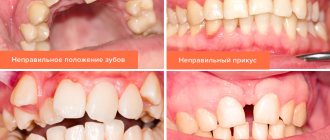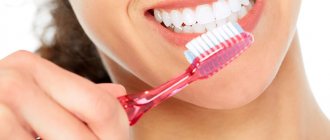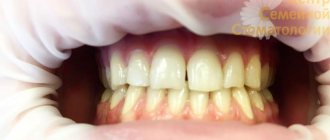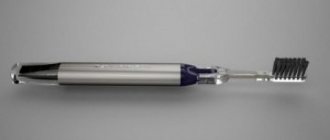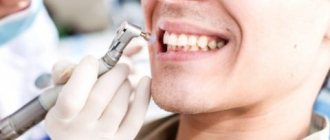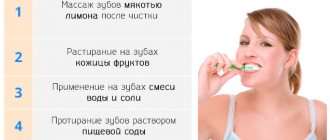№1
All people are born with 20 baby teeth, which are located under the gums. Each baby tooth appears at a predetermined moment for it. The same applies to their loss. They have a limited service life, after which they are replaced by radical (permanent) ones.
There are only two factors that speed up the loss of baby teeth: poor oral hygiene or an accident.
However, despite the fact that we are born with 20 baby teeth and they are temporary, it is advisable to prevent their premature loss. Their preservation ensures the safety and correct position of the permanent molars in the mouth. Usually they do not fall out until the age of 12 (again, if the two factors described above do not influence).
Buddha tooth
If Christians have the shroud of Christ or the relics of numerous saints, then Buddhists preserve as a divine artifact a tooth that, according to legend, belonged to the Buddha himself .
This tooth is on display in the city of Kandy in Sri Lanka, in a place that, oddly enough, is called the Temple of the Tooth. In ancient times, it passed from king to king, since its owner was considered to have supreme power.
№5
Let's go back to point 4. We said that the hardest things in our body are teeth, not bones. But many people are sure that teeth are bones. This is wrong.
They are similar to bones in that they are mostly made of calcium. However, unlike bone, which is primarily made up of the protein collagen, they are made up of dentin and enamel. Also, unlike bones, they cannot regenerate themselves (remember how fractures heal in our country, and how cracks in our teeth do not heal).
Some babies are born with teeth
About one in 2,000 babies are born with prenatal teeth—that is, teeth that erupt before birth. Typically, these teeth grow on the lower gum and have weak roots. Often these teeth are removed so that they do not interfere with breastfeeding and do not lead to accidental swallowing. In some cases, they may indicate the presence of certain medical problems, and in ancient physiognomy they were associated with evil forces. According to some statements, Julius Caesar and Napoleon were born with teeth.
№12
Today we are accustomed to the fact that you can find a lot of toothpastes and brushes on the market. But before things were a little different. Since ancient times, people have tried to take care of their teeth, but due to the lack of scientific knowledge, ancient oral hygiene products were significantly different from modern ones.
For example, the first toothbrushes appeared around 3500 BC. e. in Egypt. They looked like chewed branches.
Before toothpaste was invented, the Greeks and Romans used an abrasive paste made from ground eggshells, bones, animal hooves, and even ash.
You can also see with your teeth
In 2000, a woman in the United States underwent a unique operation. Sharon Thornton lost her vision due to Stevens-Johnson syndrome, which destroys cells on the surface of the eye. Doctors suggested restoring the woman’s vision using… a tooth. She had a fang removed, into which an artificial lens was inserted and implanted in her left eye. A day later, the blind woman was able to see the world again.
The most expensive paleontological sale
October 3, 2009
In Las Vegas, USA, an auction was held at
Bonhams & Butterfields of a Tyrannosaurus rex nicknamed “Samson” was put up for sale . Samson's length during his lifetime reached 12 meters, and his weight was approximately 4.5 tons. The auction organizers expected to earn at least $6 million from the sale of the skeleton; previously it was offered for $8 million, but in the end “Samson” was sold for about $5 million to a collector from the United States who wished to remain anonymous. The amount of 5 million dollars is also approximate, because... the exact figure remains unknown and is based on sources close to the auction. Another interesting fact is that the skeleton of the tyrannosaurus “Samson” was actually the skeleton of a female, not a male. The new owner of such an expensive find provides it for display to museums and it delights visitors from all over the world.
Fact 10. Political leaders have beautiful smiles
Politicians are public figures, so they carefully monitor their appearance. An important point is maintaining the health and beauty of the oral cavity. In this regard, the most popular dental procedure is enamel whitening.
It is noteworthy that the Chinese ruler Mao Zedong never brushed his teeth, because he considered it a useless, time-consuming activity. He only rinsed his mouth with water and chewed tea leaves to freshen his breath.
But Russian Tsar Nicholas II, on the contrary, strictly adhered to oral hygiene. He changed his toothbrush twice a month and used large quantities of tooth powder.
Amazing facts
And a few more interesting facts worthy of attention:
- According to some data, about 70% of hockey players lose at least one tooth during the game. Therefore, hockey is rightfully considered a very dangerous sport for teeth.
- It is a mistaken belief that chocolate is one of the most harmful foods for oral health. Food that gets stuck between teeth poses a greater threat, as it creates a breeding ground for bacteria. But the chocolate will still melt.
- According to observations, the dentition is as unique as fingerprints. That is, it is impossible to meet two people with the same dentition.
- There are several known cases where mature people, when they lost their masticatory organs, grew another set.
The most ancient artificial teeth
Teeth made from artificial materials have also been known for quite a long time. Most often, skillfully ground animal bones were used for this purpose. Such artificial teeth have been found in the jaws of ancient Egyptians and Etruscans.
Other peoples used products made from durable turtle shells as prosthetics. In those days, any material required great skill, so only a select few could afford such prostheses. An interesting find was discovered in South America - the jaws of an ancient Inca contained a full set of artificial teeth (32!), made of quartz and amethyst.
Ancient artificial teeth
Famous people's teeth
Several interesting facts about the teeth of famous personalities have reached our time:
- In 1816, a certain aristocrat bought Newton's tooth. The purchase cost him $40,000 in modern dollars and was used as decoration for a ring.
- Mao Zedong did not consider it necessary to brush his teeth. Instead, to get rid of the unpleasant odor, he preferred to drink green tea and simply rinse his mouth.
- Russian Tsar Nicholas II had different beliefs. He was very clean and used large amounts of tooth powder. And I changed my toothbrush at least 2 times a month.
- Legends say that Adam had 30 teeth. And Buddha himself has 40.
- The first US President George Washington had a difficult situation with his teeth. Due to health problems, by the time of his election, he had almost completely lost his own teeth and was forced to wear dentures, which explains the slightly unnatural expression of the president’s face in the portrait used on dollar bills.
How much can one tooth cost?
The most expensive tooth in human history was that of the famous physicist Isaac Newton. At the beginning of the nineteenth century, it was bought by an aristocrat for an amount that, in modern terms, amounted to almost forty thousand dollars. The lucky buyer placed the scientist's tooth in his gold ring.
The most expensive tooth belonged to a great physicist
Brushing between teeth is just as important as brushing the visible parts
When we brush our teeth, we can reach the peaks and sides of them. But the surfaces between the teeth, which make up a large part of them, also need proper cleaning . That's why it's best to brush between your teeth daily to draw out food and bacteria and promote healthy gums. Dental floss and brushes with special round attachments are best suited for this.
Who invented toothpaste and when?
Toothpaste, oddly enough, was invented 5 thousand years ago . True, its composition was not always the same as what we are used to today. For example, the ancient Egyptians cleaned their teeth with a mixture of red wine and pumice. But in the Roman Empire, the main component of toothpaste was... urine. A toothpaste composition close to the modern one was developed only at the end of the 19th century by Colgate.
Fact 2. Dental tissues are incapable of regeneration
The profession of a dentist will be in demand at all times, because a feature of human teeth is their inability to regenerate. If a tooth is broken or destroyed due to caries or another disease, it will be impossible to restore healthy tissue. If the damage is minor, the tooth can be filled. Significant damage cannot be eliminated; the unit must be removed and a prosthesis or implant installed in its place.
But in some animal species, dental tissues have the ability to self-regenerate. In the same sharks, units grow as they wear down, and in elephants, they are replaced up to 9 times during their life (and elephants live for about 60 years).
Since ancient times they have been able to treat teeth
Dentist is one of the oldest professions in the world. Ancient dentists not only treated teeth, but also successfully transplanted them. They used organs of living or dead people as biomaterial. Archaeologists have discovered dental implants among buried pharaohs of Ancient Egypt. Most likely, they were taken from slaves or dead people.
Transplantology was carried out until the beginning of the last century. Researchers say soldiers who died at the Battle of Waterloo had their teeth removed and sent to dentists around the world. Well, in modern dental practice, implantation has long become a common procedure.
The body produces salivary fluid continuously. On average, about two liters of saliva are produced in the oral cavity during the day. The main function of salivary fluid is to protect the dental covering from pathogenic bacteria that easily infect it. If there is not enough saliva, the mucous membranes of the mouth dry out and the teeth quickly decay.
We suggest you familiarize yourself with Stomatitis on a child’s tongue: how to treat it at home
People who produce little saliva have bad teeth.
Saliva not only moistens the oral cavity, but also maintains the acid-base balance at the required level. If a person eats food rich in acids or, conversely, alkalis, the salivary glands begin to work more intensely to normalize the acid-base balance and protect the enamel from destruction. In addition, the salivary fluid contains bactericidal components that kill pathogenic microbes living in the mouth.
Since tooth enamel is very strong, it is not easy to drill through it with a regular metal drill. Therefore, diamond drills are traditionally used in dentistry.
Diamond drill bit can withstand the hardness of tooth enamel
Diamond is one of the hardest materials in the world.
Dentures are not an invention of our time. The first artificial teeth appeared a long time ago. According to archaeologists, the Egyptians and Etruscans have long made dentures from animal teeth.
Representatives of other nationalities made prosthetics from turtle shells. In ancient times, only professionals could process such materials, so artificial teeth were only available to very wealthy members of society.
In South America, archaeologists found a pair of artificial jaws with a full set of teeth (32 units). The prosthesis was made of quartz and amethyst.
Tooth enamel is considered the hardest tissue of the human body. It has no cellular structure and is not capable of regeneration. During tooth development, four groups of cells are formed from the epithelium. Three of them subsequently die, and on the basis of the fourth, the enamel itself is formed.
An anomaly was recorded in two Indian residents - the men had not 32, but 35 teeth in their mouths. And here is another record from the same India: a 110-year-old resident of Uttar Pradesh suddenly grew two new and completely healthy teeth!
Toothpaste, oddly enough, was invented 5 thousand years ago. True, its composition was not always the same as what we are used to today. For example, the ancient Egyptians cleaned their teeth with a mixture of red wine and pumice. But in the Roman Empire, the main component of toothpaste was... urine. A toothpaste composition close to the modern one was developed only at the end of the 19th century by Colgate.
Implantation operations are not an invention of our time. It is known that they were successfully carried out in Ancient Egypt. Thus, in the jaws of many Egyptian pharaohs, “non-native” teeth were discovered, apparently transplanted from the mouths of slaves. Similar operations were practiced by the ancient Incas. In particular, the remains of an Indian were discovered in South America, whose jaw consisted entirely of artificial teeth. Moreover, the dentures were made of semi-precious stones - amethyst and quartz.
Incredible strength
Human teeth are bone formations located in the oral cavity that perform the functions of grasping and mechanically processing food. Their amazing strength is due to their extremely high calcium content.
Interesting facts about teeth and their composition:
- Tooth enamel is the hardest compound the human body can produce.
- It is in the teeth that the bulk of calcium is concentrated. The concentration of this element in them is 99% of the total amount in our body.
- Scientists have proven that the structure of human and shark tooth enamel is completely the same.
- The main problem of human teeth is their inability to recover, which is why we have to turn to dentists.
It is interesting that our saliva performs a protective function for teeth. And since its quantity decreases with age, the risk of dental problems increases markedly.
John Lennon tooth
The Beatles leader was very fond of fantasizing during his lifetime, but it is unlikely that it ever occurred to him that one of his teeth would become a famous collector's item after his death. This tooth is a molar with caries, which Lennon gave to the daughter of his housekeeper, who was an ardent fan of the group .
Today, with John Lennon dead, the tooth has a new owner: a dentist paid $30,000 for it, not to display it, but to study the DNA and one day clone Lennon.
